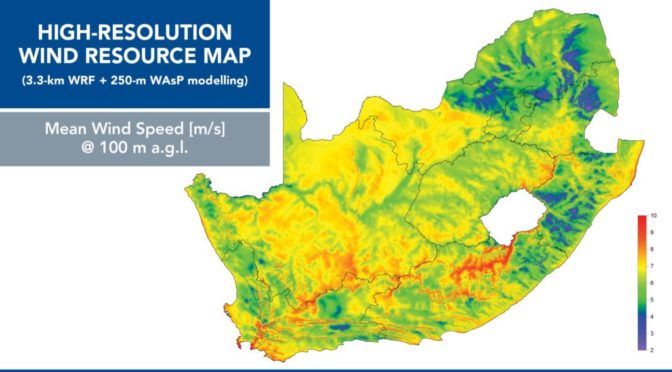While coal still dominates the South African energy mix, the contribution from variable renewable energy sources, such as solar photovoltaics (PV), wind and concentrated solar power (CSP), surpassed the contribution from nuclear energy for the first time in 2020.
This is according to research conducted by the Council for Scientific and Industrial Research (CSIR), published in its Statistics of utility-scale power generation in South Africa in 2020 report.
The research is based on a range of data sources and is driven by an Eskom data portal recently established in the interests of power system data transparency, which provides new insights on specific daily, weekly and monthly electricity production, load-shedding experienced in 2020, as well as the flexibility needs of the power system.
The report, which provides a landscape of declining electricity system production and demand between 2010 and 2020 in SA, notes coal power plants provided 184.4TWh of electricity in 2020 and coal still accounts for 83.5% of power generation.
It further notes SA has been gradually adding utility-scale wind, solar PV and CSP for years, increasing the installed capacity from 467MW in 2013 to 5 027MW by the end of 2020 – 414MW of wind and 558MW of solar PV were added during the year 2020 alone.
Nuclear energy, meanwhile, contributed 11.5TWh (5.2%), and for the first time, variable renewable energy surpassed nuclear, contributing 12.4TWh (5.6%).The rest of the energy capacity was met by other sources, including diesel, hydro and pumped storage plants.
“In the unprecedented year that was 2020, system demand declined by 11.8TWh (5.1%) compared to 2019, relative to pre-lockdown forecasts. This significant increase on the part of variable renewables was due to 415MW of wind and 558MW of solar PV becoming operational during the past year,” according to the CSIR.
By the end of 2020, the monthly wind, solar PV and CSP production combined varied between 784GWh and 1 161GWh, with the maximum daily total energy from solar PV, wind and CSP combined being 59GWh on 1 December last year, according to the report.
Combined with other renewable energy, such as hydro plants and pumped storage, this supported 10.5% of the total system demand in 2020, equating to 23.1TWh of electricity. The capacity of wind, solar PV and CSP energy produced in 2020.
Despite more than R450 billion spent on the Kusile and Medupi power stations, and the increase in sustainable power sources, SA’s ability to generate electricity has declined by 10% over the past decade, according to the CSIR’s report.
The year 2020, described as “the most intensive” year for load-shedding, saw SA being plunged into 860 hours of darkness, and for most of these hours the country suffered stage two load-shedding.
The report also notes that tapping the energy-generating potential of SA’s waters is crucial if the country is to overcome the energy crisis.
During his State of the Nation Address in February, president Cyril Ramaphosasaid one of the priority interventions of SA’s recovery plan is to rapidly expand energy generation capacity.
He pointed out that the necessary regulations have been amended and the requirements clarified for municipalities to buy power from independent power producers, adding that systems are being put in place to support qualifying municipalities.
Government will soon be initiating the procurement of an additional 11 800MW of power from renewable energy, natural gas, battery storage and coal, in line with the Integrated Resource Plan 2019, the president said.
While there has been rapid growth in the contribution of sustainable power sources over recent years, the renewables energy sector has been calling for swift and prompt action from government, saying this can add up to 2 500MW to the energy mix in a year.
“The maximum instantaneous penetration level from variable renewable energy was 16% of system demand and occurred on 27 December, while the lowest combined wind, solar PV and CSP energy of 15GWh occurred on 24 April 2020,” says the report. The average annual capacity factor of the solar PV, wind and CSP fleet in 2020.
Sibahle Malinga, itweb.co.za


